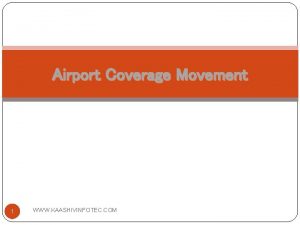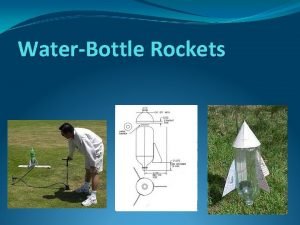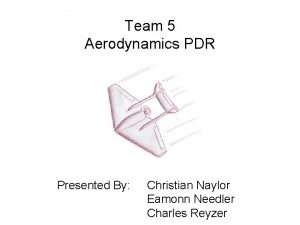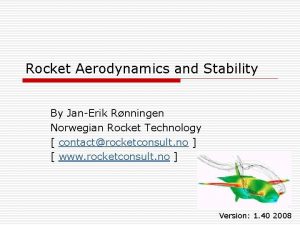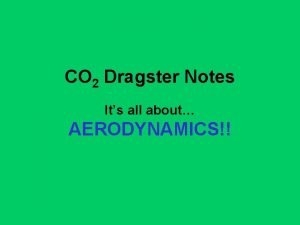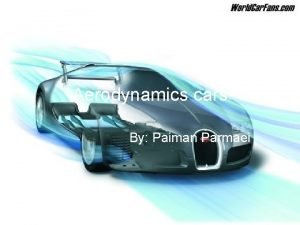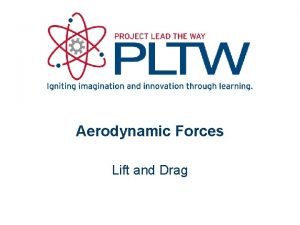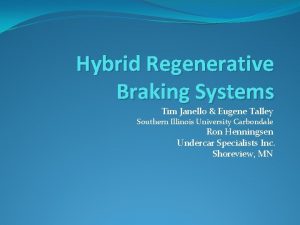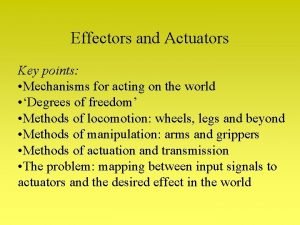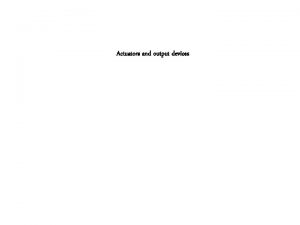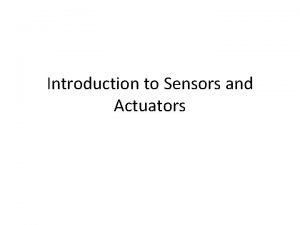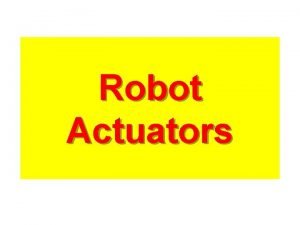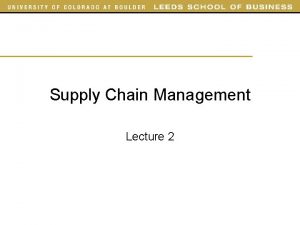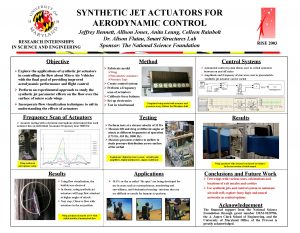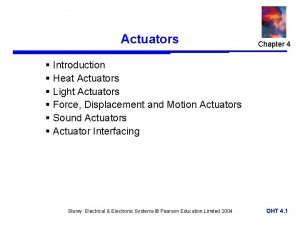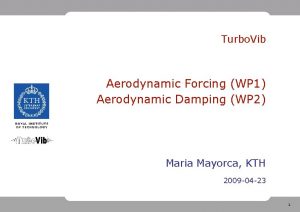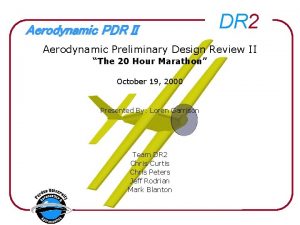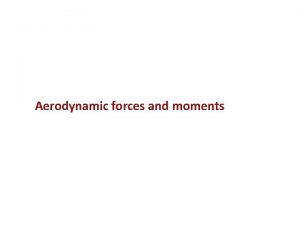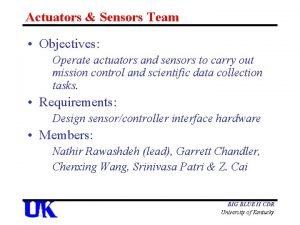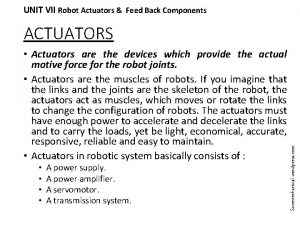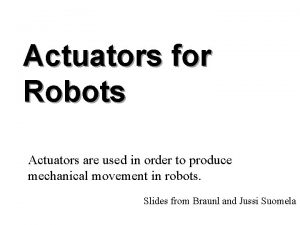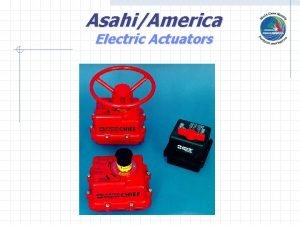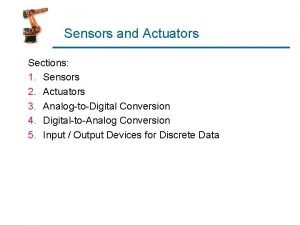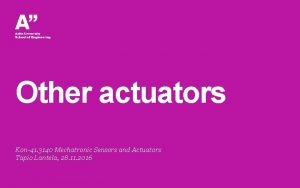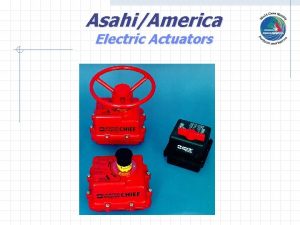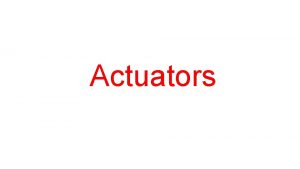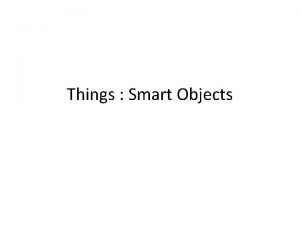Synthetic Jet Actuators for Aerodynamic Control Research Internships





















- Slides: 21

Synthetic Jet Actuators for Aerodynamic Control Research Internships in Science and Engineering University of Maryland, College Park, MD Jeffrey D. Bennett Trinity University Allison K. Jones Rose-Hulman Institute of Technology Anita W. Leung University of Michigan Colleen E. Rainbolt Purdue University

Objectives Ø Background Ø Methods ØActuator design ØPressure analysis ØControl algorithm ØWind tunnel testing Ø Results Ø Analysis Ø Conclusion

Background Ø What is a synthetic jet? Previous Research • Smith, B. L. and Glezer, A. , 1997 • Lachowizc, J. T. Yao. C-S, and Wlezien, R. W. , 1998 • Rathnasingham, R. and Breuer, K. S. , 1996 • Hassan, A. A. and Janaki. Ram, R. D. , 1998

Background Ø What is a Micro Air Vehicle (MAV)?

Project Goals Ø Explore the applications of synthetic jet actuators to the control of the flow about Micro Air Vehicles with the final goal of providing improved aerodynamic performance and flight control Ø Study the use of synthetic jets for aerodynamic control in a range of fluid dynamic regimes Ø Perform flow visualization techniques to aid in understanding the interaction effects in arrays of synthetic jets.

Wing Design ØAirfoil: NACA 0012 ØWing Dimensions: 3” x 6” ØShell Fabrication Method: ØSand wings ØBake in mold ØCover ØBake with fiberglass in mold ØRemove core

Pressure Tap Design Pressure tap design #1 Pressure tap design #2 Ø Designed taps to transfer pressure from airflow over the wing to a pressure reading device

Actuator Design Ø Ø Diaphragm attached to individual airfoil sections Actuators designed to: Ø Be small Ø Produce ample displacement Actuator Design #1 Various exit nozzles

What is a PZT? Lead Zirconium Titanate Ø Ceramic Material Ø Expands and contracts with applied AC voltage Ø Prior work demonstrated PZT as useful driver for synthetic jets Ø

Wing Fabrication Ø Ø Ø Wing sections connected with threaded rod Actuators share common ground Covered in fiberglass shell (not shown)

Control System Design ØAllow for precise data acquisition ØUser varies: ØOn/Off states ØAmplitude Simulink algorithm ØFrequency d. SPACE controls

Control System Benefits Flow Wing Surface Ø Roll Control Ø Varied Jet Control Actuators s Actuators

Locating Resonance Frequencies

Flow Visualization Using flow visualization, the bubble was observed at 14º angle of attack Ø In theory, using synthetic jet actuators will keep flow attached at higher angles of attack Ø

Measurements Applied force causes strain gages produce a voltage drop Ø Ø Allows measurement of lift and drag

Wind Tunnel Setup ØElectronics #1 ØOpen ØDigital wind Setup pressure tunnel sensor ØWing ØVariable mounted vertically ØDigital gain amplifiers multimeters ØFunction ØSetup #2 ØClosed test section ØWing mounted horizontally generator

Results Ø Ø Constructed testable airfoil Collected data in wind tunnels, varying: Ø Ø Ø frequencies angles of attack exit nozzle diameter

Analysis Ø Ø Some collected data disagreed significantly with theoretical values Actuator effects were often indiscernible from signal noise

Conclusions Ø More testing needed to determine the effect of synthetic jet actuators Ø More sensitive equipment needed to test on small scale Ø Gained experience in such areas as: Ø Wind tunnel testing Ø Prototype design and construction Ø Modern research methods and techniques

Future Work Ø Ø Ø Different actuator design Multiple rows of actuators Vary exit nozzles Ø Ø Ø Shape Size Angle Different pressure sensing apparatus Implement fuzzy logic and/or neural networks into the controls

Contact Information Jeffrey D. Bennett -- Jeffrey. bennett@trinity. edu Trinity University Engineering Sciences Allison K. Jones -- Allison. k. jones@rose-hulman. edu Rose-Hulman Institute of Technology Physics and Applied Continuous Mathematics Anita W. Leung -- awleung@umich. edu University of Michigan Aerospace Engineering Colleen E. Rainbolt -- rainbolt@purdue. edu Purdue University Aerospace Engineering
 Yelvington jet aviation jet fuel
Yelvington jet aviation jet fuel Waterbottle rockets
Waterbottle rockets Christian naylor
Christian naylor Missile aerodynamics
Missile aerodynamics Least aerodynamic shape
Least aerodynamic shape Dragster aerodynamics
Dragster aerodynamics Drag divergence mach number
Drag divergence mach number Aerodynamic devices
Aerodynamic devices Lift coefficient formula
Lift coefficient formula Peas of ai
Peas of ai Toyota highlander brake bleeding sequence
Toyota highlander brake bleeding sequence Effectors and actuators
Effectors and actuators Is an actuator input or output
Is an actuator input or output Mechatronics notes
Mechatronics notes Difference between sensors and actuators
Difference between sensors and actuators Advantages and disadvantages of hydraulic actuators
Advantages and disadvantages of hydraulic actuators Fixed automation diagram
Fixed automation diagram Booz allen internships
Booz allen internships Umuc internships
Umuc internships Baxter internships
Baxter internships Supply chain internships
Supply chain internships Novo nordisk
Novo nordisk
